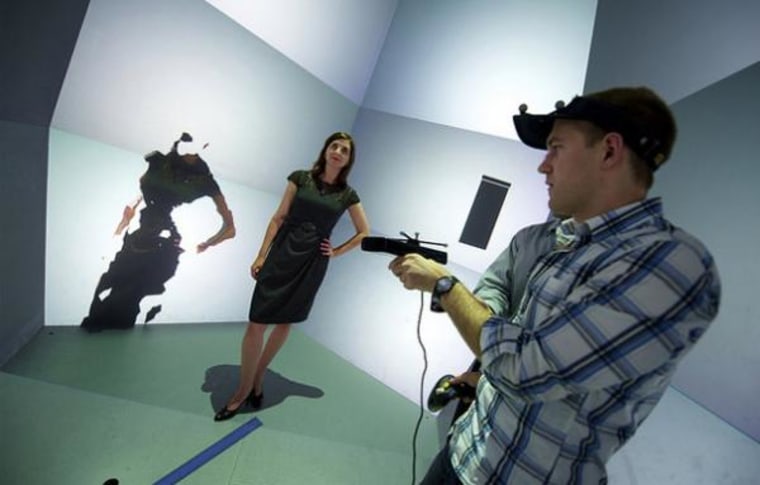There's not much business in making gadgets for archaeologists, but that has not stopped the modern day Indiana Jones types from adapting the tools of other trades for their painstaking explorations of ancient cities, battlefields and burial grounds. Their latest triumph comes from hacking Microsoft's Kinect gaming device to create a handheld 3-D scanner capable of virtually replicating entire dig sites filled with artifacts and unearthed buildings.
The hacked "ArKinect" casts a pattern of infrared dots on people and objects so that it can map them in 3-D, just as it typically captures the full-body motions of gamers playing on the Xbox 360. It can already digitize people and small objects such as ancient weapons or pottery, but researchers at the University of California in San Diego hope their device can soon capture 3-D scans of entire buildings or neighborhoods.
"We are hoping that by using the Kinect we can create a mobile scanning system that is accurate enough to get fairly realistic 3-D models of ancient excavation site," said Jurgen Schulze, a research scientist at the California Institute for Telecommunications and Information Technology.
That mobile version would be a portable self-contained, battery-powered instrument with an onboard screen so that users can see their scanning progress. Such 3-D mapping comes at a cheap price — the Kinect sells for $150 — compared to expensive LIDAR instruments that have already created similar 3-D maps of archaeological sites.
The 3-D scans collected in the field might eventually be displayed in the institute's immersive virtual reality environment called the StarCAVE. That could give researchers back at the university a chance to study 3-D models of artifacts and dig sites.
"There may be experts off site that have access to a CAVE system and they could collaborate remotely with researchers in the field," Schulze said. "This technology could also potentially be used in a disaster site, like an earthquake, where the scene can be digitized and viewed remotely to help direct search-and-rescue operations."
A team of archaeologists and engineers has begun training in using the ArKinect, so that they can hopefully bring the portable 3-D scanner to a dig site in Jordan. Such efforts suggest that gaming technology, long dismissed as low-brow entertainment, might even belong in a museum with other cultural artifacts after all.
Follow InnovationNewsDaily on Twitter @News_Innovation, or on Facebook.
